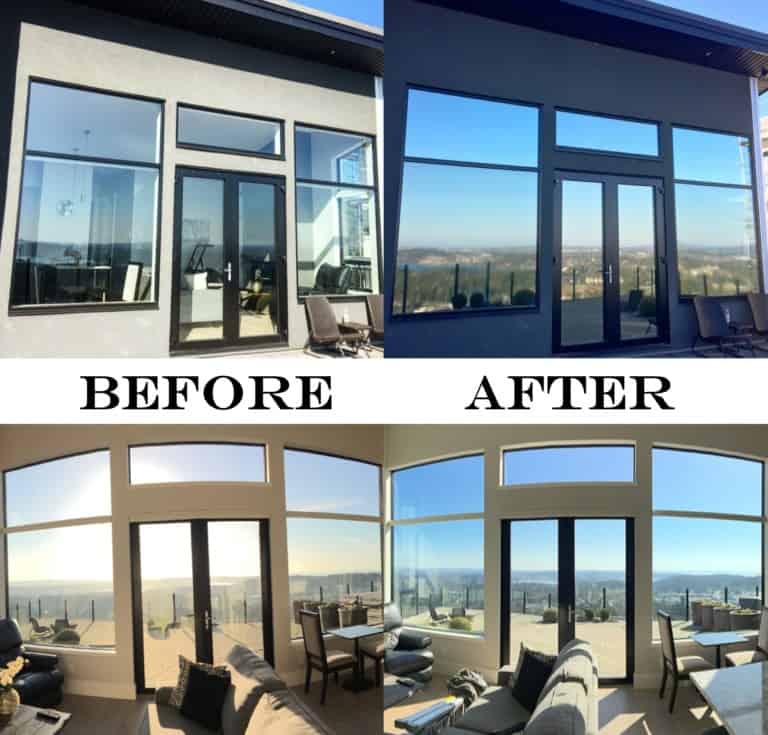Residential Window Tint: Keep Your Home Comfy Year-Round
Residential Window Tint: Keep Your Home Comfy Year-Round
Blog Article
Exactly How Residential Window Tinting Enhances Your Home's Energy Effectiveness
Residential home window tinting provides an engaging service for property owners looking for to boost energy effectiveness within their living areas. By applying specialized movies to windows, it successfully decreases heat transfer, thus maintaining indoor temperature levels and decreasing the need for extreme home heating or air conditioning. This not just curtails power intake but also gives a much more comfortable environment by mitigating glare. Understanding the nuances of exactly how tinting jobs and selecting the appropriate kind for your home can be critical. Curiously, what variables should one take into consideration before making this financial investment?
Comprehending Home Window Tinting
Comprehending window tinting is necessary for homeowners seeking to improve both comfort and power effectiveness in their home. Residential Window Tint. Window tinting involves the application of a slim film to the inside or outside surface of glass windows. This film can substantially regulate the amount of sunlight and heat that goes into a home, therefore influencing interior environment conditions
There are various types of window tinting movies offered, each with distinct residential properties. As an example, colored films take in solar power, while reflective movies disperse it far from the glass surface area. Ceramic films provide a balance of visibility and heat rejection, making them a preferred choice amongst homeowners. The effectiveness of window tinting is usually gauged by its Visible Light Transmission (VLT) percentage, which suggests just how much light can pass with the movie.
Benefits of Power Effectiveness
Window tinting not only improves visual appeals however likewise plays a substantial function in improving energy efficiency within property rooms. By lowering warmth transfer through home windows, tinted films produce a more steady interior climate, which can result in significant decreases in energy consumption for cooling and heating. This power effectiveness translates into reduced energy expenses, giving home owners with considerable long-term savings.

In addition, home window tinting boosts the comfort of living areas. By reducing glare and obstructing unsafe UV rays, tinted windows develop an even more enjoyable atmosphere, which can result in enhanced wellness for occupants. The protection against UV rays likewise assists protect furnishings and flooring from fading, adding to the longevity of home things.
Exactly How Tinting Works
Tinting films operate with a combination of advanced materials and innovations made to manage the amount of solar power entering a home. Mainly made up of polyester, these films usually include metallic or ceramic bits that soak up and reflect warm. This double capability allows them to dramatically minimize the penetration of ultraviolet (UV) rays and infrared radiation while allowing visible light to travel through.
The effectiveness of window tinting is measured by its solar heat gain coefficient (SHGC), which indicates just how much solar power is transferred through the home window. Reduced SHGC values are more effective as they signify better heat denial. In addition, home window tints can include a selection of tones, allowing home owners to tailor their aesthetic preferences while improving energy performance.
Additionally, these films serve as a barrier, preventing heat loss throughout chillier months by reflecting click to investigate interior warmth back right into the space. This thermal insulation impact complements the cooling advantages acquired throughout warmer months, adding to a balanced indoor climate year-round. By taking care of solar power effectively, residential window tinting not only enhances convenience however also plays an important duty in lowering energy usage and decreasing energy expenses.
Choosing the Right Color

There are various sorts of window movies available, including colored, metalized, and ceramic. Colored films are economical yet might have limited toughness. Metalized films provide far better warm being rejected yet can hinder digital signals. Ceramic movies provide exceptional warmth control without endangering exposure and are highly sturdy, making them a prominent option.
Noticeable light transmission (VLT) is one more important element, as it shows the quantity of natural light that can pass with the tinted glass. House owners should pick a tint with a VLT that complements their illumination preferences while still providing adequate glow reduction.
Furthermore, examining the solar heat gain coefficient (SHGC) can assist determine how well a tint can block warmth from sunshine. A reduced SHGC shows far better warm control, eventually enhancing energy efficiency.
Setup and Maintenance Tips
Correct setup and upkeep are crucial components in optimizing the benefits of residential window tinting. To achieve ideal outcomes, it is advisable to work with a certified specialist for setup. This guarantees that the color is applied properly, preventing air bubbles, creases, or imbalance that could jeopardize performance. Experts likewise use specialized methods and tools, which can improve the longevity and effectiveness of the tint.
Complying site link with installation, upkeep is important to prolong the life of the window movie. It is recommended to wait at the very least 30 days before cleansing the colored home windows to permit the sticky to cure completely.
In addition, regular assessments are beneficial. Look for any peeling or bubbling, which might suggest incorrect installment or use in time - Residential Window Tint. Resolving these problems immediately can prevent further damage and keep energy effectiveness. By adhering to these setup and upkeep suggestions, house owners can ensure their home window tinting remains to provide significant energy cost savings and convenience for several years ahead.
Conclusion
In verdict, residential home window tinting offers as an efficient remedy for boosting energy performance within homes. By minimizing heat transfer and blocking dangerous UV rays, home window films contribute to lower energy usage and enhanced interior comfort.
Home window tinting entails the application of a thin film to the interior or outside surface of glass home windows. By reducing warmth transfer through windows, colored films create a more steady interior environment, which can lead to considerable decreases in energy usage for home heating and cooling.The effectiveness of home window tinting is measured by its solar heat gain coefficient (SHGC), which shows how much solar power is transmitted through the window. By taking care of solar power successfully, residential home window tinting not only enhances comfort yet also plays a vital duty in lowering energy intake and lowering utility Discover More expenses.
By lowering warm transfer and obstructing dangerous UV rays, home window movies contribute to decrease power intake and enhanced interior convenience.
Report this page